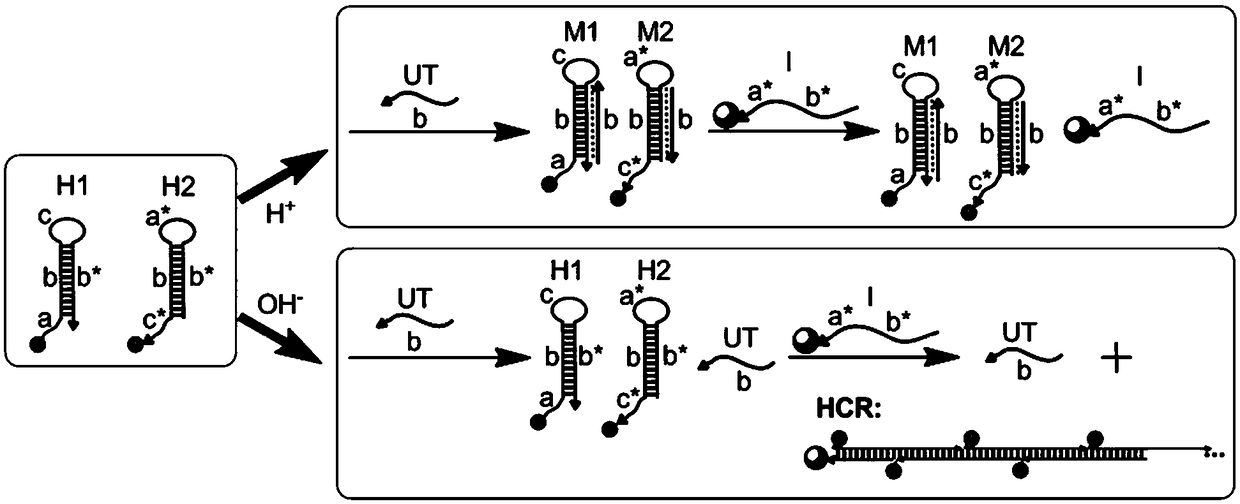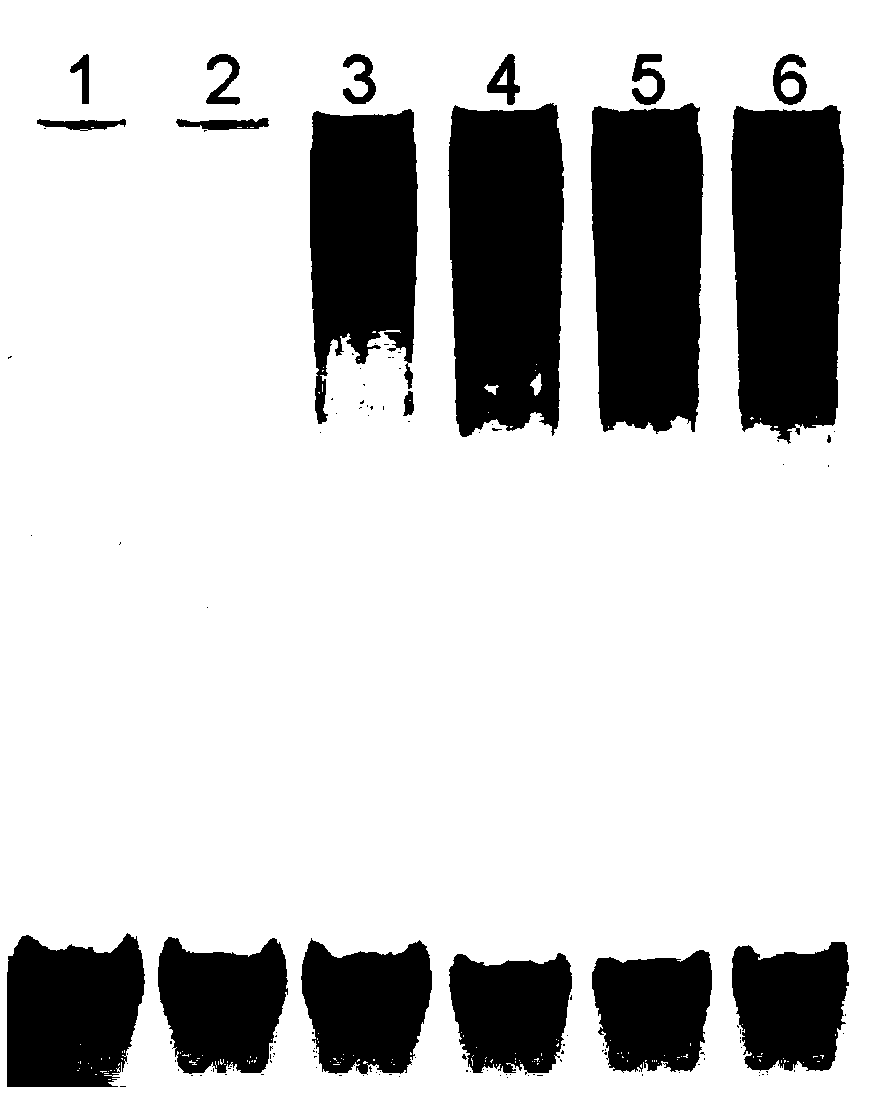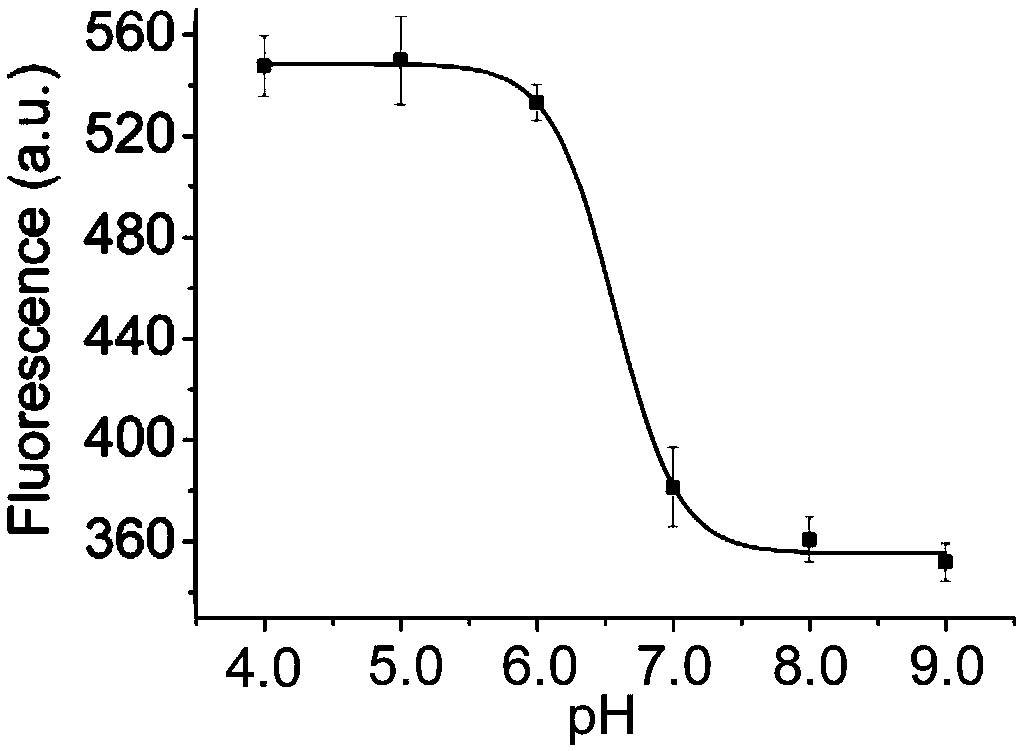A triple-helix pH biosensor and application thereof
A biosensor, triple helix technology, used in instruments, scientific instruments, measuring devices, etc., to achieve the effects of high sensitivity, fast response, and easy operation
- Summary
- Abstract
- Description
- Claims
- Application Information
AI Technical Summary
Problems solved by technology
Method used
Image
Examples
preparation example Construction
[0048] In one embodiment of the present invention, the preparation method of the I chain / magnetic bead complex comprises the following steps:
[0049] Wash the carboxylated magnetic beads with a phosphate buffer solution of pH=7.0, and then activate the carboxyl group with 1-(3-dimethylaminopropyl)-3-ethylcarbodiimide hydrochloride (EDC) solution (0.1M); Preferably, the activation conditions are: the reaction temperature is 35-40°C, and the reaction time is 20-40min;
[0050] Wash the reacted system with pH=7.0 phosphate buffer solution to remove excess EDC;
[0051] Add the aminated priming chain I chain to the above-mentioned magnetic bead dispersion for reaction to prepare the I chain / magnetic bead complex; preferably, the reaction conditions are: the reaction temperature is 35-40°C, and the reaction time is 10 ~15h.
Embodiment 1
[0053] Embodiment 1 Experimental principle
[0054] Experimental principle such as figure 1 As shown, the system consists of two hairpin DNAs (H1 and H2), a single-stranded priming DNA (I) and a capture probe (UT). The 5' end of the hairpin H1 chain and the 3' end of the H2 chain were respectively modified with the fluorescent group Alexa Fluor488. Carboxylated polystyrene magnetic beads are introduced into the system, and the I-chain of the initiator chain modified with the amino group at the 3' end can be connected to the surface of the magnetic bead through an amide reaction to obtain a I-chain / magnetic bead complex. Under acidic conditions (pH=4.0-6.0), the double-helix stems of the hairpin H1 chain and H2 chain combine with the UT chain to form triple-helix hairpin structures M1 and M2 of reverse Hoogsteen bonds. After adding the I chain / magnetic bead complex, the I chain cannot undergo the toehold-mediated chain displacement reaction. After magnetic separation, the su...
Embodiment 2
[0057] A triple-helix pH biosensor, the biosensor system includes two kinds of hairpin DNA (H1 and H2), single-stranded trigger DNA (I), capture probe (UT), the sequence of the H1 chain is 5'-TACAGCGAGGAAGGGAGAAGAGGATAGGAGTCCTCTTCTCCCTTCCTC-3 ', the sequence of the H2 chain is 5'-TCCTCTTCTCCCTTCCTCGCTGTAGAGGAAGGGAGAAGAGGACTCCTA-3', the sequence of the I chain is 5'-TCCTCTTCTCCCTTCCTCGCTGTA-3', the sequence of the UT chain is 5'-GAGGAAGGGAGAAGAGGA-3', wherein the 5' of the hairpin H1 chain The terminal and the 3' end of the H2 chain are respectively modified with the fluorescent group Alexa Fluor488, and the 3' end of the I chain is modified with an amino group. Carboxylated polystyrene magnetic beads are introduced into the system, and the 3' end of the amino group is modified. The I chain can pass through the amide The reaction attaches to the surface of the magnetic beads, resulting in I-strand / magnetic bead complexes.
PUM
 Login to View More
Login to View More Abstract
Description
Claims
Application Information
 Login to View More
Login to View More - R&D
- Intellectual Property
- Life Sciences
- Materials
- Tech Scout
- Unparalleled Data Quality
- Higher Quality Content
- 60% Fewer Hallucinations
Browse by: Latest US Patents, China's latest patents, Technical Efficacy Thesaurus, Application Domain, Technology Topic, Popular Technical Reports.
© 2025 PatSnap. All rights reserved.Legal|Privacy policy|Modern Slavery Act Transparency Statement|Sitemap|About US| Contact US: help@patsnap.com



